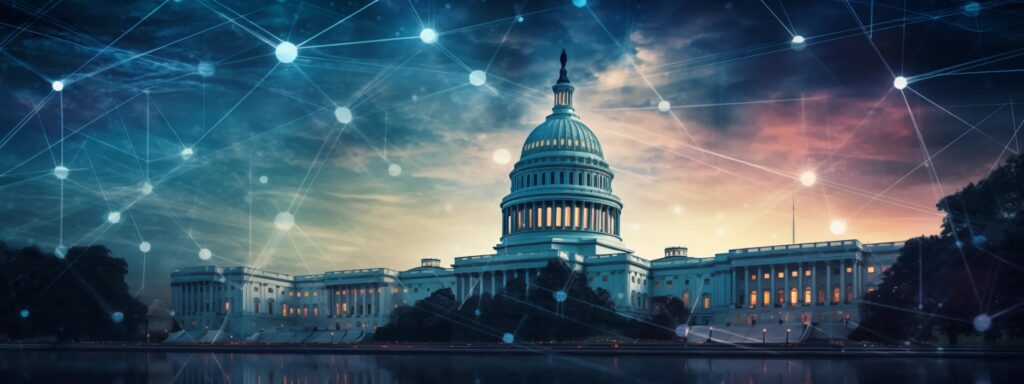The Evolution of Data Center Compliance Reporting in a Sustainable Future
As the global community becomes increasingly concerned about climate change and the accompanying environmental implications, the role of data centers in these conversations is magnifying. As we look at the complex landscape of regulations and metrics, an exploration into the future of data center compliance reporting reveals both challenges and opportunities.
Understanding the Global Context
“Most operators expect carbon emissions reporting requirements soon — yet many are unprepared.”
Source: Uptime Institute in their Global Survey of IT and Data Center Managers 2022
The Uptime Institute’s revelation is not an isolated incident but echoes the voice of an industry caught in the vortex of rapid digital transformation and environmental conservation. As data centers burgeon across every conceivable business and service sector, the impending imposition of carbon emissions reporting becomes a critical fulcrum of sustainability.
Complex Regulatory Landscape
The multifaceted nature of regulations like the EU’s Energy Efficiency Directive (EED) and California’s Title 24 underscores a diverse, global approach to reigning in the environmental footprint of data centers. Singapore’s DCS and Australia’s NABERS incentive-driven models encourage sustainable innovation. The United States Securities and Exchange Commission’s (SEC) proposal combines the narrative of financial transparency with environmental accountability.
European Union
Data centers with an installed IT power demand of at least 500 kilowatts will be required to report their energy performance annually, effective May 2024 for 2023 measures.
Source: EU Energy Efficiency Directive (EED), the Official Journal of the European Union
The EU Energy Efficiency Directive (EED) has set several ambitious targets to reduce energy consumption, aiming to achieve a 32.5% reduction in primary energy consumption by 2030 compared to 2007 levels, with a sub-target of a 30% improvement in energy efficiency in data centers by the same year. It has also outlined measures to enforce these targets, such as mandatory energy audits for large energy users such as data centers.
California, USA
California has taken a similar approach with its Title 24 standards, imposing energy-efficiency requirements on all newly constructed buildings. For data centers, these include standards for computer room energy efficiency, Power Usage Effectiveness (PUE) monitoring, and water and lighting efficiency. Furthermore, the latest version of Title 24, in effect from 2023, has tightened the minimum PUE requirement for data centers from 1.2 to 1.1.
Singapore and Australia
The Singaporean Data Centre Energy Efficiency Scheme (DCS) and Australia’s National Built Environment Rating System (NABERS) take slightly different approaches, offering incentives for data centers to adopt energy-efficient technologies and practices. The DCS provides grants for implementing energy-efficient technologies and financial aid for energy audits. At the same time, NABERS calculates a facility’s rating based on operational data, considering factors such as PUE, cooling system efficiency, water consumption and waste generation.
United States Securities and Exchange Commission (SEC)
In the United States, the SEC has proposed new rules require public companies to disclose their climate-related risks, including those related to data centers. The proposed regulations would require the disclosure of direct greenhouse gas emissions (Scope 1), indirect emissions from purchased electricity or other forms of energy (Scope 2) and certain types of GHG emissions.
All these initiatives represent the world’s mounting concern over the environmental impact of data centers and the growing pressure on operators to demonstrate their commitment to sustainable operations. Yet, despite these pressing demands, many data center operators are unprepared to meet these new regulatory requirements, creating an urgent need to rethink their strategies and prioritize sustainability.
The Heart of Compliance: Metrics
The art of navigating this intricate regulatory environment lies in mastering a diverse set of metrics – from Average Delta T, Cooling Efficiency, Energy Consumption, PUE, Total CO2, Carbon Usage Effectiveness (CUE), Server Utilization, Water Usage Effectiveness (WUE), each a unique piece of the holistic picture of sustainability. Global corporations now find themselves in a labyrinth of regional metrics, each tailored to specific environmental and energy contexts, demanding a nuanced, adaptable approach to compliance.
The Digital Panacea
Technology’s pivotal role emerges as the harbinger of seamless compliance. As operators delve into the complexities of the required metrics and calculations, digital tools and analytics ascend as the linchpins of operational optimization. Real-time data monitoring and pre-built compliance reports can equip operators with actionable insights, transforming compliance from a bureaucratic hurdle to a strategic asset.
The Compliance Journey
The path to robust compliance is iterative, nuanced and highly contextual. It begins with a detailed analysis of regional requirements, culminating in a tailored strategy addressing legislative requirements with an anticipatory planning element. The emergent narrative is not of overnight transformation but of sustained evolution underpinned by continual learning, adaptation and growth.
The Resource Landscape
The monumental task of compliance does not rest solely on the shoulders of data center operators. Data Center Infrastructure Management (DCIM) companies, accounting firms and ESCOs emerge as strategic partners, weaving the complex tapestry of data, insights and reporting into a coherent, actionable narrative. This ecosystem of support transcends traditional boundaries, invoking a collaborative ethos essential for navigating the impending environmental and regulatory hurdles.
The Collaborative Imperative
The future of data center compliance reporting is not an isolated journey but a collective expedition. Governments, regulators, industry contemporaries and technology vendors converge in a dynamic dance of ideas, innovations and insights. The definitive solution will be a collaboration of all key stakeholders.
Final Thoughts
In an era where data is the economy’s currency, data centers are the unsung custodians of this invaluable resource. As the curtains rise, unveiling the environmental implications of these monumental data repositories, a new sustainability narrative is created. Compliance reporting, often viewed through bureaucratic encumbrance, is morphing into a strategic enabler of sustainable innovation.
Each regulation, metric and digital tool is a chapter in this unfolding story – a narrative not of isolated entities navigating the turbulent waters of compliance but of a global consortium united in its quest for a sustainable future. Compliance reporting transcends its traditional confines in this evolving dialogue, emerging as a vibrant intersection of environmental stewardship, operational efficiency and global collaboration. The future of data centers is not inscribed in the rigid lines of compliance reporting but woven into the dynamic interplay of technology, environment and humanity.
In closing, the duty of this transformative journey rests not just on data center operators but on every stakeholder in the global community. Every policy, innovation, and collaborative endeavor is a step towards a future where data centers are not just custodians of data but stewards of a sustainable, equitable world.
Referenced Legislation
The EU Energy Efficiency Directive (EED)
United States SEC Climate Risk Disclosure
https://www.sec.gov/news/press-release/2022-46
https://www.sec.gov/rules/proposed.shtml
California Title 24 in the USA
https://www.library.ca.gov/wp-content/uploads/2021/08/GuideToTitle24.pdf
Singapore’s Data Centre Energy Efficiency Scheme (DCS)
Australia’s National Built Environment Rating System (NABERS)
https://www.nabers.gov.au/about/what-nabers
Additional Resources
White Paper: Fundamental Measures of Data Center Sustainability
Executive Brief: Climate Risk Disclosures in Data Centers – A Review of the Proposed SEC Guidelines
Executive Brief: Singapore’s Data Centre Energy Efficiency Scheme (DCS)
BrightTALK Webinar: Accelerating Sustainability Through Integrated Data Center Management



